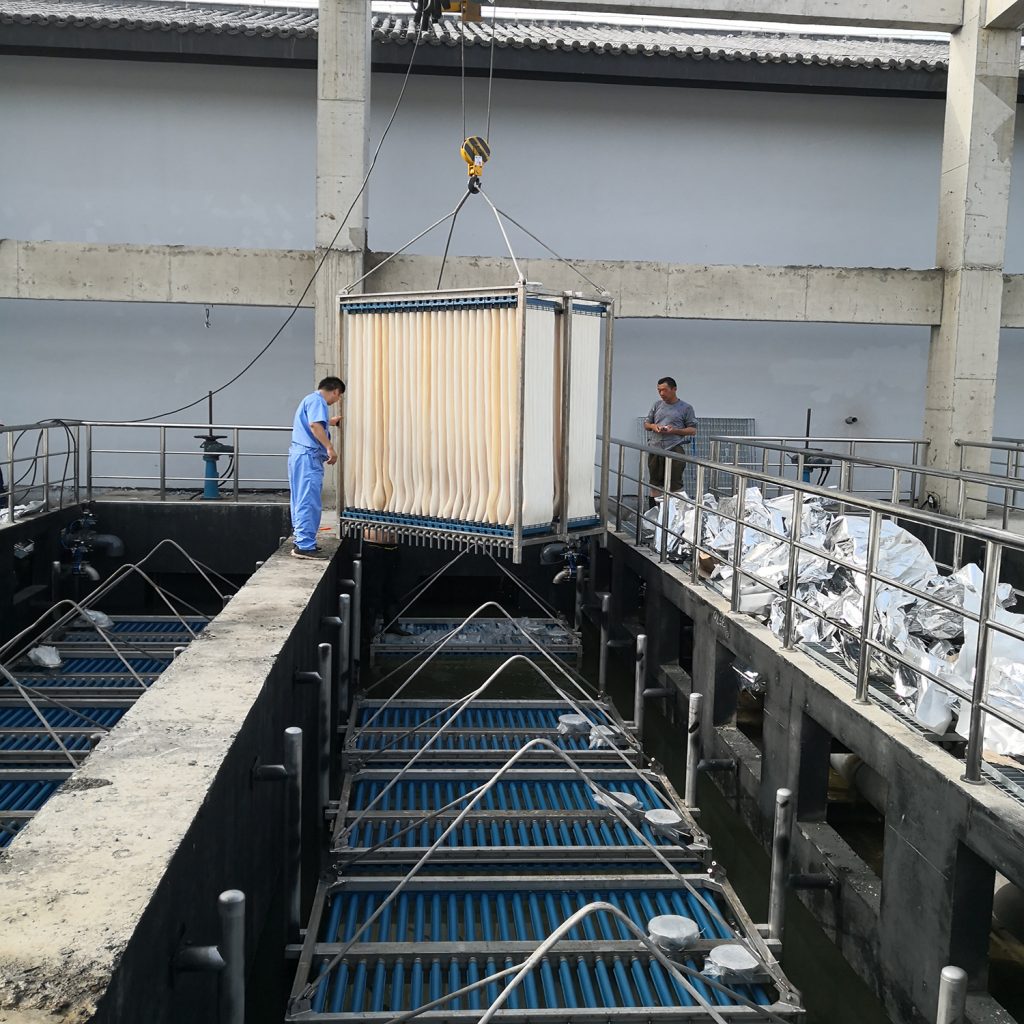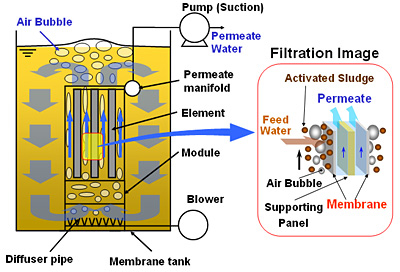Why Membrane Bioreactor Solutions Are Ideal for Sustainable Water Treatment
Wiki Article
Membrane Bioreactors Clarified: Reliable Solutions for Tidy Water
Membrane bioreactors (MBRs) have actually become a sophisticated solution for attending to journalism difficulties of wastewater treatment. By integrating biological processes with advanced membrane layer filtration, MBRs not just improve the high quality of treated water however additionally minimize the spatial demands of therapy centers. As ecological problems magnify, the duty of MBR technology in promoting lasting water monitoring comes to be increasingly significant. The intricacies of their procedure, benefits, and prospective applications merit a closer examination to totally recognize their effect on the future of water therapy.
What Are Membrane Layer Bioreactors?
Membrane bioreactors (MBRs) are advanced wastewater therapy systems that integrate biological degradation procedures with membrane filtration modern technology. This combination allows for the effective removal of contaminants from water, making MBRs a recommended option in various applications, consisting of local wastewater treatment and commercial effluent management.
One of the critical benefits of MBRs is their capacity to generate high-grade effluent, frequently ideal for reuse in watering or industrial procedures. Additionally, MBRs require a smaller impact contrasted to conventional treatment systems, making them optimal for city settings where area might be limited.
Additionally, MBRs can effectively handle differing influent lots and are less prone to the results of hazardous shocks. These features contribute to their growing popularity as a sustainable remedy for resolving the enhancing demand for tidy water while minimizing ecological influences.
Just How Membrane Layer Bioreactors Job
While the procedure of membrane bioreactors (MBRs) might appear facility, it essentially focuses on the synergy between organic procedures and membrane layer filtration. MBRs integrate a biological therapy process, typically turned on sludge, with a membrane separation system to deal with wastewater efficiently.In an MBR system, wastewater is first introduced right into a bioreactor where bacteria weaken raw material and various other pollutants. The organic activity decreases the focus of toxins while promoting the growth of biomass. Following this biological therapy, the combined liquor is subjected to membrane layer filtering, which can be microfiltration or ultrafiltration, depending upon the wanted effluent quality.
The membrane layers function as a physical barrier, allowing water and small solutes to pass while preserving suspended solids and larger particles. This enables the system to maintain a high focus of biomass within the reactor, boosting the therapy efficiency.
Moreover, the constant splitting up of treated water from the biomass promotes a small layout and reduces the impact of the therapy facility. Overall, the mix of biological degradation and membrane purification in MBRs leads to reputable and effective wastewater therapy, making sure high-grade effluent suitable for different applications.
Advantages of MBR Innovation
One of the essential advantages of membrane layer bioreactor (MBR) technology is its capability to create high-grade additional reading effluent with a dramatically minimized footprint contrasted to conventional wastewater therapy approaches. MBR systems effectively integrate biological therapy and membrane filtration, causing exceptional elimination of contaminants, including suspended solids, pathogens, and organic issue. This capacity leads to effluent that usually meets or goes beyond strict regulative criteria for reuse and discharge.In addition, MBR innovation enables for higher biomass concentrations, which improves the treatment effectiveness and lowers the required reactor volume. This small style is specifically advantageous in city locations where room is restricted. The functional adaptability of MBR systems additionally means they can adapt to differing influent top qualities and flow prices, making them ideal for a vast array of applications.
Additionally, the reduced sludge manufacturing connected with MBR processes contributes to reduce functional and upkeep costs. The membranes work as a physical obstacle, lessening the risk of obstructing and enabling longer functional periods between cleansing. On the whole, the advantages of MBR technology make it an eye-catching option for lasting wastewater treatment, attending to both environmental issues and the requirement for effective resource monitoring.
Applications of Membrane Layer Bioreactors
With their convenience and effectiveness, membrane layer bioreactors (MBRs) discover applications throughout different industries, consisting of metropolitan wastewater therapy, commercial procedures, and even water recovery. In local settings, MBRs offer a compact service for dealing with wastewater, effectively getting rid of contaminants while all at once generating high-grade effluent that satisfies rigorous regulative standards. This makes them particularly ideal for locations with limited space.In commercial applications, MBR modern technology is utilized for dealing with process water, particularly in markets such as food and beverage, pharmaceuticals, and petrochemicals. These sectors take advantage of MBRs' ability to handle high natural lots and their performance in recouping useful resources from wastewater, such as nutrients and water.
Furthermore, MBRs play a crucial duty in water improvement campaigns, enabling the reuse of dealt with wastewater for irrigation, commercial processes, or also as potable water after additional treatment (Membrane Bioreactor). Their efficiency in eliminating pathogens and pollutants makes them a reliable option for making sure water top quality in various reuse applications
Future of Water Treatment Solutions
The future of water therapy services is poised for transformative improvements driven by technological development and raising ecological understanding. As international water deficiency ends up being a pressing issue, brand-new techniques, consisting of membrane layer bioreactor (MBR) systems, are established to play a crucial duty in improving the performance and sustainability of water Get More Info therapy processes.Arising technologies such as artificial intelligence and artificial intelligence are anticipated to maximize therapy procedures, permitting real-time tracking and predictive upkeep. This will improve the total reliability and effectiveness of water therapy centers. Innovations in membrane layer materials, such as graphene and nanofiltration, assure to enhance permeation rates and lower fouling, leading to lower power intake and functional expenses.
In addition, the integration of renewable resource sources right into water therapy plants will add to greener practices. The round economic situation design will additionally obtain grip, encouraging the healing of valuable resources from wastewater, such as nutrients and energy.
Final Thought

Membrane bioreactors (MBRs) have actually emerged as an advanced remedy for addressing the pressing challenges of wastewater treatment. By integrating organic procedures with innovative membrane layer purification, MBRs not just improve the quality of treated water but also lower the spatial demands of treatment centers.One of the key benefits of membrane bioreactor (MBR) innovation is its capacity to produce top quality effluent with a significantly decreased footprint contrasted to traditional wastewater therapy techniques.With their versatility and performance, membrane layer bioreactors (MBRs) discover applications throughout numerous industries, including local wastewater therapy, commercial procedures, and even water reclamation.In conclusion, membrane bioreactors represent a considerable innovation in wastewater therapy technology, incorporating biological processes with effective membrane filtration to generate high-quality effluent.
Report this wiki page